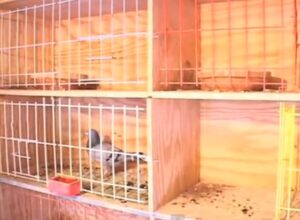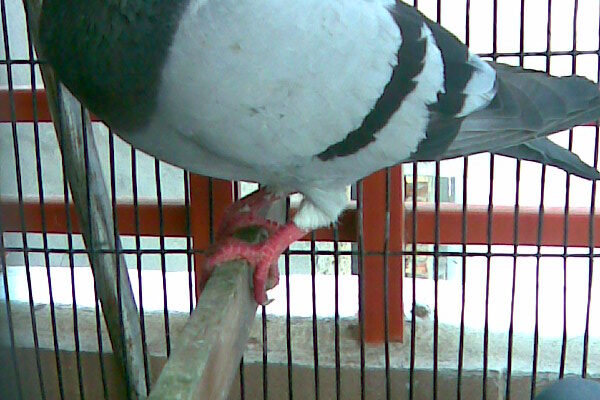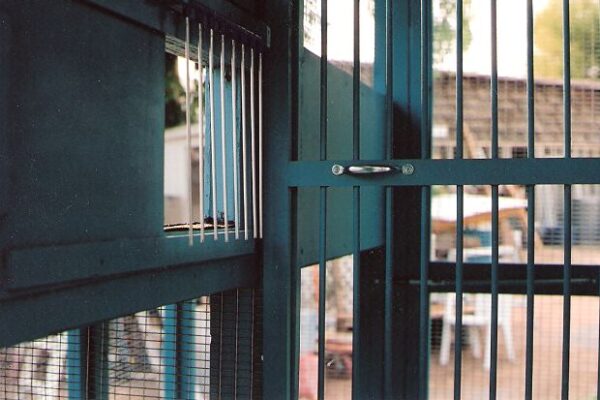Pigeon Racing and The Importance of Nest Boxes by Dr. John Lamberton
 One of the most important “triggers” of the homing instinct in high quality racing pigeons is the type and amount of territory that each pigeon claims or is allowed to claim for him or herself due in the pigeon loft. Homing pigeons primarily return to the territory they have claimed within the loft as much or more than they return to the loft itself. The amount of territory that each racer claims is very important to the motivation and ultimate speed at which racers return home. To a significant degree, it is important for each racer to claim a minimum territory in the loft that measures 10 inches in depth by 30 inches in width. Many Belgian nest fronts can be purchased to fit nest boxes this approximate size. Personally, we do not think that a nest box 10 inches deep is deep enough. We prefer a depth of 22 to 24 inches. Usually, the depth of nest boxes is determined by the length of a fancier’s arm. In order to adequately scrape the back of a nest box, the depth of a nest box should not be longer than a fancier’s arm can comfortably reach the back of the box. We do agree, however, that 30 inches is an adequate width for a nest box.
One of the most important “triggers” of the homing instinct in high quality racing pigeons is the type and amount of territory that each pigeon claims or is allowed to claim for him or herself due in the pigeon loft. Homing pigeons primarily return to the territory they have claimed within the loft as much or more than they return to the loft itself. The amount of territory that each racer claims is very important to the motivation and ultimate speed at which racers return home. To a significant degree, it is important for each racer to claim a minimum territory in the loft that measures 10 inches in depth by 30 inches in width. Many Belgian nest fronts can be purchased to fit nest boxes this approximate size. Personally, we do not think that a nest box 10 inches deep is deep enough. We prefer a depth of 22 to 24 inches. Usually, the depth of nest boxes is determined by the length of a fancier’s arm. In order to adequately scrape the back of a nest box, the depth of a nest box should not be longer than a fancier’s arm can comfortably reach the back of the box. We do agree, however, that 30 inches is an adequate width for a nest box.
Most people usually place a great value on their house or home. Inside a house, men tend to prefer dens or offices, or work rooms or bathrooms while women often tend to prefer kitchens, bedrooms, and children’s rooms. Men and women often like to “nest” in a particular room that meets their most personal needs and preferences. Not surprisingly, the same type of preference is true in homing pigeons. As a rule of thumb, perches are much less desirable than spacious nest boxes. Nest boxes lower to the loft floor are less desirable than nest boxes located higher near the loft ceiling. In our lofts, both racing and breeding nest boxes are located no lower than our waists or about three feet off of the loft floor.
In general, it has been our experience that the larger the nest boxes, the more motivated pigeons are to race home quickly. Why do we say this? Because pigeons are more rested and relaxed and alert if they are not constantly fighting other pigeons in the loft for a small amount of personal space that they can claim for themselves. As a rule, nest boxes should be a minimum of about 24 inches by 30 inches in size. We have seen larger nest boxes, however. We know of fanciers in Belgium whose nest boxes that are much larger than 24 by 30 and have no nest fronts on them.
This is one of the reasons that we prefer to race a very small number of pigeons. An adequate loft size to properly house 50 to 100 pigeons constructed to the dimensions we have just recommended would be a mammoth structure – far too large for most urban yards or and far too large to clean and reasonably maintain. Let us repeat our basic mantra: “It is better to race one pigeon well than many pigeons poorly.”
Each section of our racing loft is about 60 inches wide or the width of two nest boxes side by side. Sections of this width are easy to physically control the behavior of the pigeons in it. When we enter each section, we want each racer to remain in their nest box rather than attempt to fly away into another section. If racers are on the floor, we gently tap a stick or broom on the floor as a signal that they should immediately ascend to their nest box while we are present in their section of the loft. We believe that it is important that each racer is quietly standing in their nest box and attentive to us while we are in their loft section.
It has been our experience that pigeons raced to roomy nest boxes – especially young birds – race much better and much faster than pigeons that are raced to marginal or over crowded territories. We believe that champion pigeons should not be treated like chickens or some other “flock” birds that can be squeezed into small spaces to live their lives in constant competition for a small modicum of personal space. Racing pigeons need enough territory or room in order to motivate them to want to play the game at the top of the race sheet.
Motivation is significantly influenced by the adequacy of the amount of territory that each pigeon has claimed. It is important to provide enough territory for each racer to claim in order to unlock and unleash the true passion of the homing instinct.
Pigeon Racing and The Importance of Nest Boxes by Dr. John Lamberton






To Shane & Eric I have a family Whites That fly 500 miles and some reds that do the distance MY Name John Glemser Of Glemser loft.com
Interesting post,
does anyone have any recommendations for top shelf white racers that can fly from Reno to San Francisco (over Sierra’s etc). I’m looking for some reliable lofts to purchase a few birds for this purpose, hopefully from areas with mountainous terrain. I realize white birds attract hawks but my wife likes them. Happy Wife, Happy Life
Hi Shane,
I agree with this philosophy. Space is prime for quality birds, especially racers. I have ‘colored’ racers as well as ‘white’ homers. We are currently training both groups (separately) here in the Rocky Mountains of Montana, near the Canadian border. It is a real process even for anyone with exceptional birds. Winds here on the East slope of the Rockies are typically 20 – 40 mph any given day. Winds of 70 -100 mph are not uncommon. Hawks are prolific here in our open landscape. We have quality stock that is smart from birth about these issues, we actually have such a ‘natural selective’ from these factors, that we have phenomenal stock. If you would like we can keep up with one another and I can let you know when we have more birds – of any color.
Sounds good, can you email me your contact info to [email protected]
I am looking for good colored stock also. Please contact me at [email protected] thanks